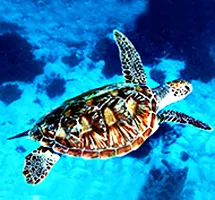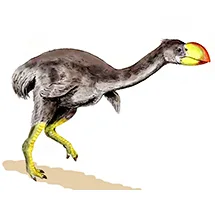Endangered Animals in Australia
Contents
Australia is home to nearly 600 endangered animal species. Sadly, many of these animals are on the brink of extinction due to habitat loss, climate change, pollution, and hunting. History offers sobering lessons. For example, the Tasmanian tiger vanished within decades of European settlement, and the gastric-brooding frog was wiped out in the 1980s. These and other tragic losses serve as warnings. We must protect Australia's unique wildlife, in their natural habitats, for future generations to experience.
Koala Endangered
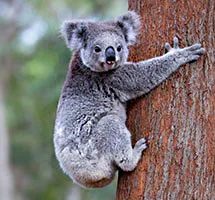
Koalas are cuddly tree-dwelling marsupials with large noses. The biggest threat to koalas is habitat loss caused by land clearing, domestic dog attacks, chlamydia, bushfires, and road accidents. The estimated population of koalas ranges from 330,000 to 520,000.
Read More about KoalasCassowary Endangered
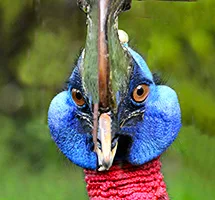
Cassowaries are the world's most dangerous and second-largest bird. They are threatened by habitat loss, vehicle strikes, dog attacks, human interactions, pigs, disease, and natural disasters. Less than 50,000 cassowaries survive in the wild.
Read More about CassowariesWombat Critical
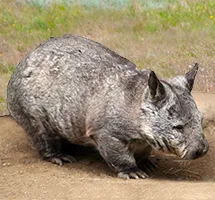
Northern hairy-nosed wombats survive in only two locations in Queensland. Their rapid decline is due to competition from cattle and sheep. Extensive conservation efforts have increased their numbers to 300 from just 35 in 1980.
Read More about WombatsTasmanian Devil Endangered
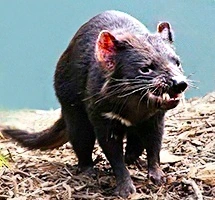
The Tasmanian devil, the world's largest meat-eating marsupial, is threatened by a facial tumour that causes large lumps on its head, mouth, and neck, which result in starvation. Only about 25,000 Tasmanian devils remaining in the wild.
Read More about Tasmanian DevilsSwift Parrot Critical
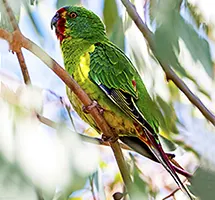
The Swift Parrot, the fastest parrot in the world, is facing extinction due to habitat loss, droughts, competition for food from introduced bees, cat predation, and illegal human capture. Currently, there are only 2,000 Swift Parrots left in the world.
Read More about Swift ParrotsSnapping Turtle Critical
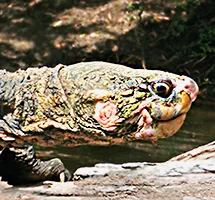
The white-throated snapping turtle can can live up to 100 years and has the unusual characteristic of breathing through its bum (anus). It is in critical danger because of human habitat destruction and predation by feral foxes, dogs, pigs, cats and water rats.
Read More about Snapping TurtlesLeadbeater's Possum Critical
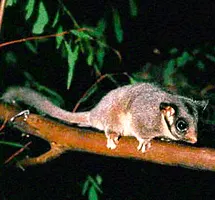
Leadbeater's Possums were Leadbeater's Possums were thought to be extinct until a few were rediscovered in 1961. Their decline is due to habitat loss caused by logging and bushfires. Their current population number is 4,000-11,000 animals.
Read More about Leadbeater'sGilbert's potoroo Critical
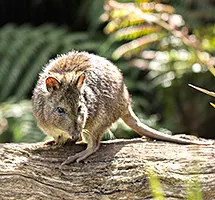
Gilbert's potoroos are small, nocturnal, herbivorous marsupials. With a global population of less than 100, they are the world's rarest mammals. Habitat loss, climate change, and feral cats and foxes are responsible for their near-extinction.
Read More about Gilbert's potoroosNight Parrot Critical
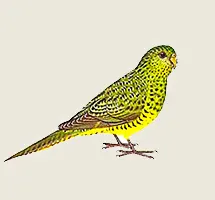
Night Parrots are small ground-dwelling nocturnal parrots. They were thought to be extinct. Only 250 survive. Predation by cats and foxes and habitat destruction by introduced animals such as rabbits, camels and livestock.
Read More about Night ParrotsWoylie Critical
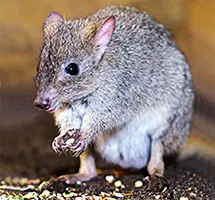
Woylies are small marsupials that carry bundles of nest building material with their tails. Their decline is a result of agriculture and land clearing, and feral cats, foxes, and rabbits. Their population is just 10,000-20,000.
Gouldian Finch Endangered
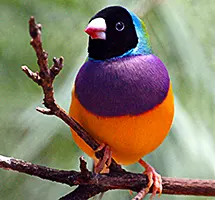
Gouldian finches, colourful grass finches that were once found in the millions, have declined to less than 2500 birds due to livestock grazing, feral cats, foxes, climate change, and bushfires. However, they survive as domestic pets.
Read More about Gouldian FinchesWallaby Endangered
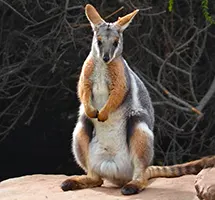
Two species of wallabies are endangered, one is threatened, and two others are vulnerable. Dingoes, dogs, cats, and foxes are among their predators. Humans threaten wallabies due to vehicular accidents and habitat loss.
Read More about WallabiesAntechinus Endangered
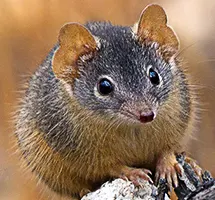
Antechinuses are mouse-like marsupials with crazy sex lives. Two species are endangered. The main threats are habitat destruction by humans, pigs, cattle, and horses. They also fall prey to foxes and cats.
Read More about AntechinusesDingo Vulnerable
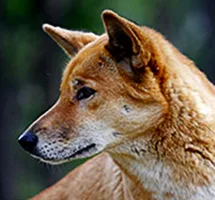
Dingoes are Australian wild dogs. The "pure" dingo breed may become extinct because of interbreeding with domestic dogs. Humans are the biggest threat to dingoes. They are frequently poisoned and shot because they threaten livestock.
Read More about DingoesSouthern Corroboree Frog Critical
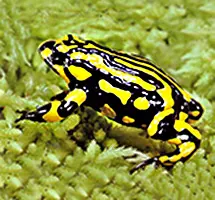
The corroboree frog is one of the most visually striking and highly poisonous frogs in the world. There may be as few as 50 left in the wild. Climate change and feral horses and pigs destroy their habitat and are responsible for their decline.
Read More about Corroboree FrogsNorthern Quoll Endangered
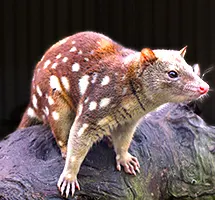
Northern quoll populations have declined drastically due to habitat destruction and degradation caused by sheep, cattle, rabbits, horses and camels. Predators such as dingoes, dogs, feral cats, snakes, owls and kites have also contributed to their decline.
Read More about Northern QuollsGreat Barrier Reef Endangered
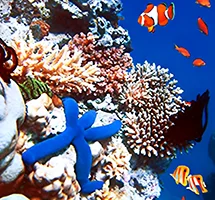
The Great Barrier Reef is the world's most spectacular coral reef. Is endangered by climate change. Other threats include poor water quality from land-based run-off, impacts from coastal development and deadly starfish outbreaks.
Read More about Great Barrier ReefBandicoot Endangered
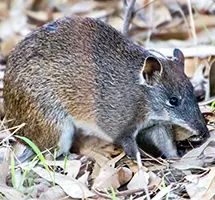
Bandicoots fall prey to dingoes, quolls, large birds, feral cats, dogs, and foxes. They are also in competition with rabbits for food and nesting areas. Many are also killed by motor vehicles and even poisoned by eating snail bait.
Read More about BandicootsQuokka Vulnerable
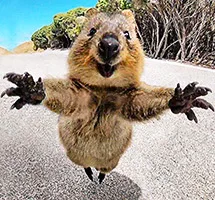
Quokkas look like the happiest animals in the world. Only 12,000 survive. The reasons for their decline are habitat loss, degradation, and predation by foxes and feral cats. They are fully protected on Rottnest Island.
Read More about QuokkasGiant Cuttlefish Vulnerable
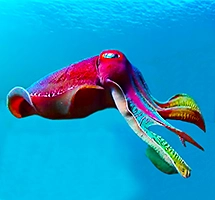
Giant cuttlefish are cephalopods related to squid and octopus. They can rapidly change colour, shape, and texture for camouflage. They can also move backwards using jet propulsion. Giant cuttlefish are impacted by overfishing and habitat degradation.
Read More about CuttlefishNumbat Vulnerable
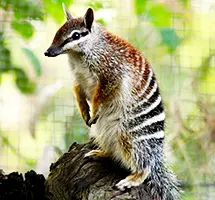
Numbats are small marsupial anteaters. Numbats are threatened by predation from foxes and cats. Land clearing is another factor affecting their decline. One species became extinct in the 1960s. Less than 1,000 numbats survive.
Read More about NumbatsDugong Vulnerable
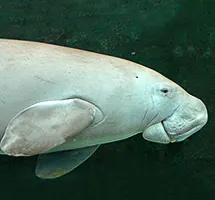
Dugongs are plant-eating marine mammals. They can grow to 3m and weigh 500 kgs. Commercial gillnet fishing is a major threat to dugongs.
Read More about DugongsGiant Clam Vulnerable
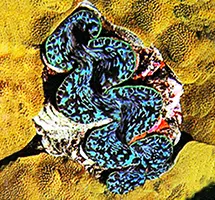
The Giant clam is the world’s largest sessile mollusc. It has large protruding blue iridescent lips. It is endangered because of harvesting by humans.
Read More about Giant ClamsBilby Endangered
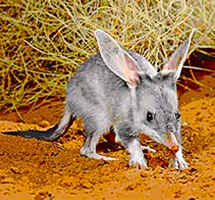
Greater bilbies are small, nocturnal, marsupials. Their declining due to predation by feral cats and foxes. And competition from cattle, sheep and feral rabbits, horses and camels. About 10,000 bilbies survive.
Read More about BilbiesTree Kangaroo Vulnerable
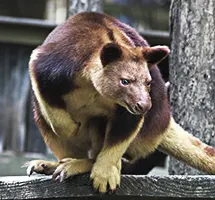
Tree kangaroos are kangaroos that live in trees. They climb by wrapping the forelimbs around a tree and hopping up with their powerful hind legs.
Read More about Tree KangaroosSea Lion Endangered

Australian sea lions have stocky bodies, a large head, and short narrow flippers. They hunt fish and squid. There are only about 10,000 left.
Leatherback Turtle Endangered
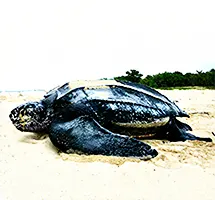
It is the largest turtle of them all. It is called a leatherback because it doesn't have a hard shell but has leathery skin. It eats jellyfish and invertebrates.
Whale Endangered
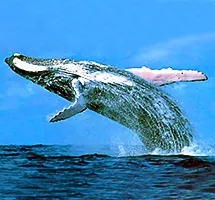
Humpback whales travel up from the Antarctic to give birth and feed their young. They can grow to 12 – 16 metres and weigh 36,000 kgs.
Plains Wanderer Critical
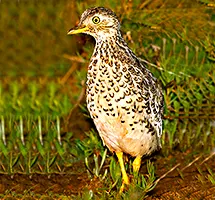
Plains wanderers are small quail-like birds that live in semi-arid grasslands. They prefer to run rather than fly and fall easy prey to foxes.
Eastern Bettong Vulnerable
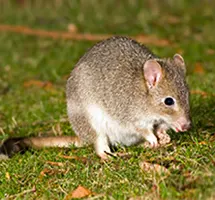
The eastern bettong became extinct on the mainland in the 1920s because of the red fox and rabbit. A small number still survive in Tasmania.
What does 'Extinct' Mean?
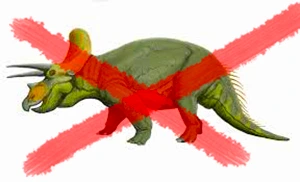
Photo: Extinct Dinosaur
Extinction means that there are no more of a particular type of plant or animal living anywhere in the world—they are extinct. A clear example of extinction is the dinosaurs. They disappeared from the face of the earth 65 million years ago. Extinction is an ongoing process of evolution. It is estimated that over 90% of all animals that ever lived since life began on the earth are now extinct. Extinction is usually a slow process that takes many hundreds, if not thousands of years.
In recent time, however, due to human activities, the number of species becoming extinct has accelerated at an alarming rate. Some species have become extinct in just a few years.
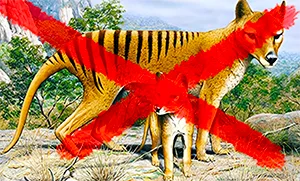
Photo: Extinct Tasmanian Tiger
In Australia, the Tasmanian tiger became extinct in just 100 years after European settlement. Similarly, in America, the passenger pigeon, which once numbered in the hundreds of millions, became extinct in less than a hundred years because of indiscriminate hunting by European settlers.
Remember, once they are gone, they are gone forever. That is extinction or to be extinct .
Who Decides Extinction?
Many conservation organisations have their own classification criteria for determining a species extinction threat level. Everybody agrees on what extinction is, but they differ in their identification of the various stages leading to extinction.
The worldwide organisation for determining the status of an animal species is the International Union for the Conservation of Nature ( IUCN). This body regularly publishes its Red List of Threatened Species. In Australia, various federal and state environmental protection agencies also publish their own lists. The Australian Department of the Environment Endangered Australian Animals List identifies many Australian native animals are endangered and threatened with extinction.
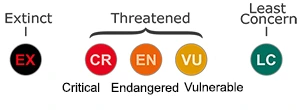
Photo: IUCN Classification of animals
The diagram on the left is a simplified version of the IUCN classifications. Basically, there are three main categories. They range from Least Concern through Threatened to Extinct. The IUCN classification bundles Critical, Endangered and Vulnerable into a broader more general category labelled Threatened.
The general public and the media, however, seem to prefer the more evocative term "endangered' to mean threatened. We too prefer the term 'endangered', to mean these animals are in imminent danger of disappearing from the face of the earth.
What is an Endangered Animal?
An endangered species is a group of wild animals or plants that are in danger of becoming extinct, totally disappearing from the earth permanently.
What Causes an Animal to Become Endangered?
Animals and plants risk becoming endangered and eventually extinct because of circumstances they cannot cope with. These include natural disasters, climate change, human impacts, competition from introduced animals, and disease.
Natural Disasters
Cataclysmic events have occurred throughout the earth’s history. Sixty-five million years ago an asteroid killed the dinosaurs. The desertification of the Sahara and the drying up of Africa similarly had significant effects on species survival. These are naturally occurring events.
Climate Change
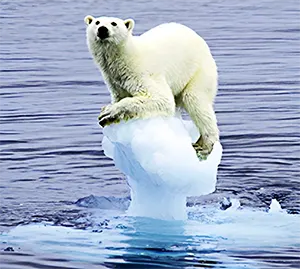
Photo: Polar bear on melted ice sheet
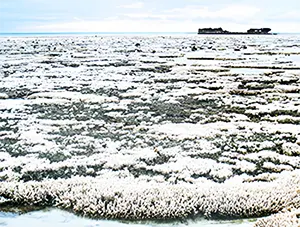
Photo: Coral bleaching
Changes in the world’s climate brought about by natural or human-induced changes can seriously affect the viability of animal species. For example, global warming and the consequent melting of the polar ice caps are threatening the future of polar bears. Closer to home, changes in sea temperature are believed to be contributing to the death of vast tracts of coral on the Great Barrier Reef.
Human Impacts
In recent time, with the growth in human populations and technology, the man-made contribution to species endangerment and annihilation has increased tremendously. We have contributed to species extinction by large scale habitat destruction and modification by agriculture, mining and urban growth, land clearing, destroying forests and the pollution of waterways, rivers, and the world’s oceans. Many animal species have also been significantly impacted by human commercial, recreational and other activities. These include commercial and recreational hunting, over-harvesting as in the case of fishing and whaling. For example, the koala almost became extinct because it was killed for its fur and the Tasmanian tiger was considered a pest and hunted to extinction.
Competition & Displacement by Introduced Species
Many animals were introduced into local environments without due consideration to their impact on local fauna. Cane toads, rabbits, red foxes and feral cats, for example, have become invasive and killed or displaced many native Australian animals.
Disease
Native animals also fall foul of diseases. For example, in recent time, koalas have been affected by chlamydia epidemics which has left many female kolas sterile. The Tasmanian Devil Tumour Disease has wiped out large numbers of the Tasmanian devil.
What Types of Animals Face Extinction?
Number of Endangered
Australian Animals
|
|
Critical |
Endangered |
Vulnerable |
Extinct |
| Fish | 7 | 16 | 24 | - |
| Frogs | 5 | 14 | 10 | 4 |
| Reptiles | 8 | 17 | 34 | 1 |
| Birds | 9 | 47 | 62 | 24 |
| Mammals | 5 | 34 | >55 | 27 |
| Other | 23 | 17 | >11 | 6 |
| Total | 57 | 161 | 196 | 62+ |
According to the Australian Department of the Environment's Endangered Australian Animals List, many Australian native animals are endangered and threatened with extinction. For example, even the cuddly koala is listed as vulnerable, the cassowary and night parrot are listed as endangered, and the gouldian finch and the 'bum breathing' white-throated snapping turtle as critical.
About 300 species of Australian animals are endangered. These animals may disappear from the face of the Earth forever. They will become extinct! Presently, one Australian animal becomes extinct every 5 years. Humans are responsible for this terrible situation.
Extinct Australian Animals
Since the arrival of European settlers in 1788, Australia has lost numerous native animals and plants. The Tasmanian Tiger is a prominent example of a recently extinct Australian animal. The last died in captivity in 1936.
Learn More About Australia's Incredibly Quirky Animals
All Rights Reserved. (Last Updated: Jun 15, 2025)
